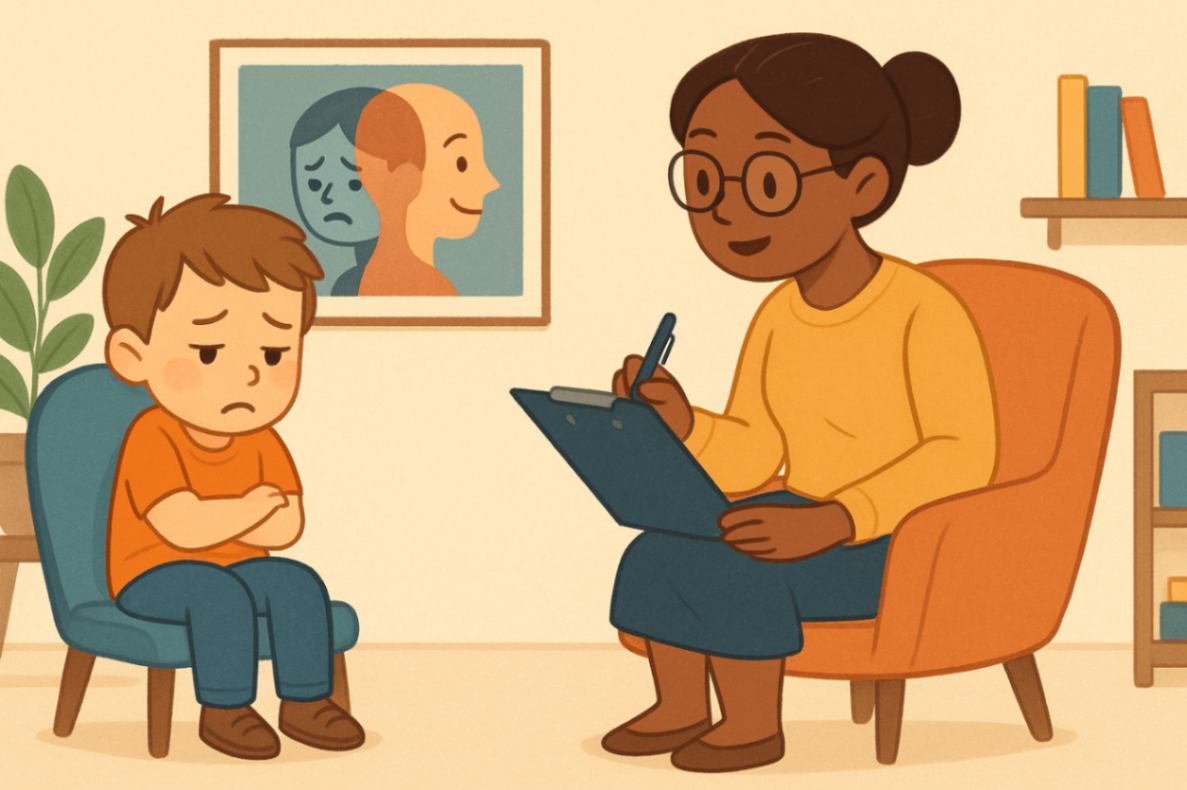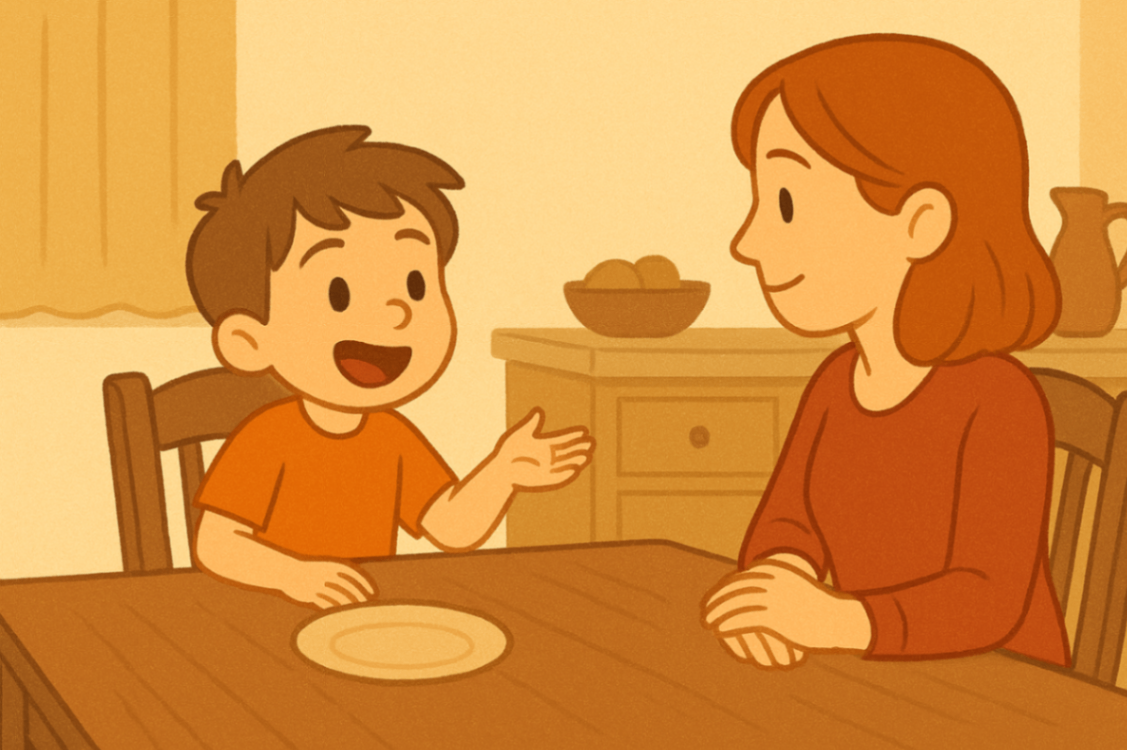
integrating behaviour support for children into everyday routines
25 July, 2025
Introduction
For families, dealing with the stress of tough behaviour in young people can be hard. Behaviour support for children gives a way for these families to make life better for everyone. When specialists use positive behaviour support, they help kids with learning disabilities to have better control over their feelings. This makes it easier for them to follow daily routines in a good way. By using support plans made just for their needs, families can use simple steps every day to cut down on problem behaviours. Over time, this can help kids grow and learn.
This blog will talk about key techniques and give real strategies to help caregivers use behaviour support for children in everyday family life and at school. The goal is to make it easier to use support plans and improve the quality of life for the whole family.
If you’re researching local options, read Best Behavioural Therapy for Kids Near You for a clear guide on what to look for.
Key Highlights
-
Behaviour Support Plans are essential for addressing challenging behaviours, improving emotional regulation, and fostering positive change in children.
-
Everyday routines provide opportunities to teach new skills and reinforce positive behaviour support development.
-
Involving siblings, educators, and family members in activities ensures comprehensive behaviour support for children growth in service users.
-
Positive behaviour support Liverpool practitioners use visual cues and reinforcement to address behaviours of concern consistently.
-
Behaviour support practitioners, along with coordinated teams, provide life-changing strategies tailored to each young person’s needs.
-
Accessing behaviour support Liverpool funding through the NDIS facilitates structured pathways to enhance a child's quality of life.
Understanding Behaviour Support for Children

Support practitioners have a big part to play in working with young people who show behaviours of concern. They help to understand each person’s needs and plan the right behaviour support for children. This means making support plans that fit their lives and help handle challenges. When families and caregivers use these plans, they often see better emotional regulation in their children. This also helps kids learn new skills. All of this improves the quality of life for the children.
Good behaviour support for children uses positive behaviour support (PBS) ideas. It brings support teams, children, and caregivers together. This teamwork helps everyone work towards positive change. By focusing on behaviour, PBS helps both the young people and those around them have a better way to face problems and build up their new skills.
What is behaviour support for children and why is it important?
Behaviour support for children involves strategies and interventions designed to promote positive behaviours and address challenging ones. It is crucial because it fosters emotional well‑being, enhances learning experiences, and helps children develop social skills. By integrating support into daily routines, children gain confidence and improve their overall development.
Key Principles of Effective Behaviour Support
Effective behaviour support starts with knowing that each person is different. It helps young people learn about their feelings and gain new skills. To do this well, you need a good behaviour support plan. This plan should bring together support practitioners, family, and service users. When the right support is in place from staff teams, quality of life can get better. It also helps manage behaviours of concern.
Using positive behavioural support (PBS), caregivers and social workers can help make life safer and more welcoming. They help set up real ways for positive change and encourage good habits that last over time. This kind of approach builds a better world for everyone involved.
Identifying Everyday Opportunities for Behaviour Support
 Everyday routines can give many chances for behaviour support. Caregivers can use different support plans that be right for the child. This can help create positive change in the child’s life. It is important to see teachable moments. These moments be good times to bring in new skills or help with emotional regulation. People can also use these moments to give positive reinforcement. Using these steps can help improve the quality of life for the young person.
Everyday routines can give many chances for behaviour support. Caregivers can use different support plans that be right for the child. This can help create positive change in the child’s life. It is important to see teachable moments. These moments be good times to bring in new skills or help with emotional regulation. People can also use these moments to give positive reinforcement. Using these steps can help improve the quality of life for the young person.
Support practitioners and family members need to work together. They can use behaviour analysis to make better support plans. These plans help with managing challenging behaviour. When everyone works together, there can be a better and more caring place for the child to grow and learn.
Recognising Teachable Moments at Home and School
Spotting teachable moments means you need to pay close attention and know what is going on at home or school. These moments can come up in daily life. The right support can help kids learn new skills and build good habits. Support practitioners help caregivers and teachers learn how to use these times in the best way. This can help young people manage their feelings and handle tough situations better. When young people get the right support at the right time, they can see real positive change in how they act and in their quality of life.
Involving Siblings, Family, and Educators in Routine Activities
When families, siblings, and educators work together each day, they help give full behaviour support. This team effort builds an inclusive space. Service users get the right support for all parts of their lives.
Key involvement strategies include:
-
Encouraging siblings to model positive behaviours during shared activities.
-
Engaging families in creating structured schedules for young people.
-
Partnering with educators to ensure consistency in behavioural approaches within classrooms.
-
Coordinating efforts with behaviour support services to align strategies with individualised plans.
Support practitioners say it is important to work as a team. They mix special strategies into daily routines to help. Educators add their knowledge to boost what families do at home. Siblings also help by showing a way for others to learn with them. With this, young people, families, and all people involved can see real positive change. This teamwork brings behaviour plans out of paper and into real life.
Practical Strategies to Integrate Behaviour Support into Daily Routines
 Adding behaviour support to the daily lives of young people and their caregivers can make things better for everyone. When families use positive behavioural support (PBS) and behaviour analysis, they can help with emotional regulation at home each day. Support plans should be steady and clear. This helps their team see behaviours of concern and work for positive change. When service users, support practitioners, and every family member work together, the right team is there every step of the way. Their quality of life can go up because they all take part, use what they know, and work as one.
Adding behaviour support to the daily lives of young people and their caregivers can make things better for everyone. When families use positive behavioural support (PBS) and behaviour analysis, they can help with emotional regulation at home each day. Support plans should be steady and clear. This helps their team see behaviours of concern and work for positive change. When service users, support practitioners, and every family member work together, the right team is there every step of the way. Their quality of life can go up because they all take part, use what they know, and work as one.
Using Visual Schedules and Consistent Cues
Visual schedules and visual cues are strong tools that help bring order and cut down on problem behaviours. Support practitioners often suggest using these methods because they allow for more clarity and predictability.
Visual aids, like charts and pictures, show what has to be done each day. They help children know what to do, and feel less stress about it. It is good to give the same verbal or physical cues over and over, such as using hand signals. These get picked up by kids, becoming easy to remember and help with understanding. Using these tools at every step of the way can make big routines simple and easy to handle.
|
Tool |
Purpose |
|---|---|
|
Visual Charts |
Help lay out daily routines in a clear way. |
|
Color-Coded Schedules |
Give feelings cues to move through tasks. |
|
Simple Hand Signals |
Make understanding better and help kids cope. |
By bringing in visual and cue-based tools, families can see positive change, help children keep emotional regulation, and stick with steady routines.
Encouraging Positive Behaviours Through Reinforcement
Reinforcement is very important when you want to grow good behaviour, especially in young people who have tough behaviour. When you use a behaviour support plan that uses positive behavioural support, it can really help. Caregivers and support practitioners be there to guide young people. They help with emotional regulation and show how to learn new skills. When you see and reward good actions all the time, it makes life better for service users. It helps to make the space more caring and safe.
If you keep up with this, it can give power to family members. It also matches with what is known as best ways to work in behaviour support services and the support teams. This method helps everyone work together on making things better. You get more out of the support, and people know what to do and how to help each other.
Conclusion
To sum up, bringing behaviour support for children into daily routines is more than helpful. It is the best way to help their growth and learning. When you notice teachable moments and let family and teachers take part, you help create a space that builds up good behaviour. Easy ideas, like using visual schedules and reward methods, can help your child learn better and feel better in their day-to-day life. You need to be steady in what you do, and over time, these things will bring real change.
If you want advice made for your home and your needs, you can book a consultation with us.
Frequently Asked Questions
How can I start integrating behaviour support at home?
To begin using behaviour support at home, first pick the behaviours that you want to work on. Set up a place that helps your child learn and grow. Be clear about what you expect. Have routines that stay the same each day. Use praise or rewards to tell your child when they do something good. You can also let your child help make some of the rules. This helps them understand and want to work together.
What if my child resists new routines or strategies?
It is common for people to not accept new ways right away when there are behaviours that worry us. Because of this, it helps to focus on emotional regulation. Make sure to change things slowly, not all at once. Support practitioners will be there to give help that fits each person’s needs and to lower stress. Try to give steady support for positive change at this time. Ask family members to join in, so there is more stability for everyone.
How do I involve teachers and carers in behaviour support?
To get teachers and carers to help with behaviour support, it is important to keep open talk about plans and what you want to achieve. Work together on each person’s plan and let each other know how things are going all the time. Make sure everyone does the same things for behaviour at home and at school. This will help children follow good behaviours in all the places they go.
Are there resources or professionals in Australia who can help?
In Australia, NDIS behaviour support services help families by giving them ways to get support. Referrals link families to support practitioners who know what they are doing. You can look for local resources to find programs that fit your needs. This helps young people get the right help to grow and do well.
How do I measure progress with behaviour support routines?
To see how well behaviour support routines are working, keep track of certain behaviours and what happens next. You can use easy tools like checklists or charts for this. Check how things change over time to see if these routines help. If needed, change your plans so you get better results. Also, talk with the child about their progress. This will help them be more a part of what is happening.
.svg)












